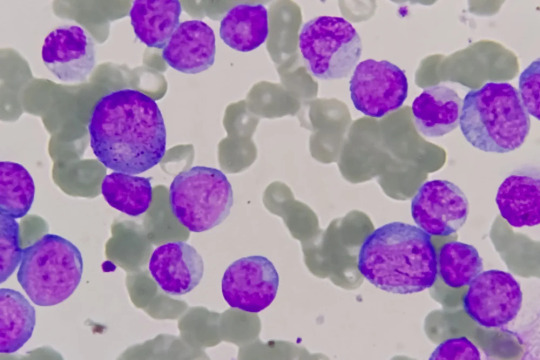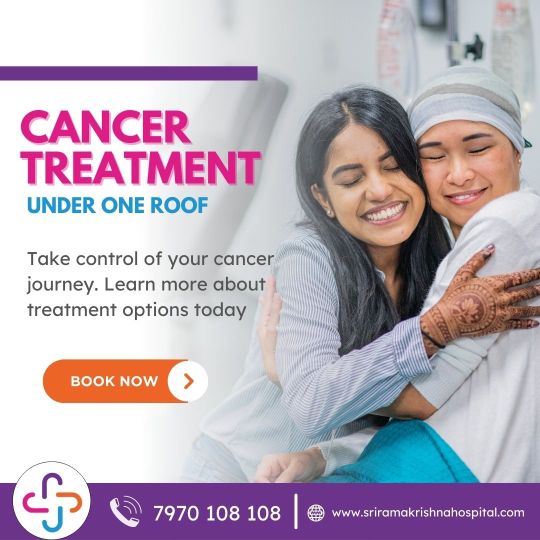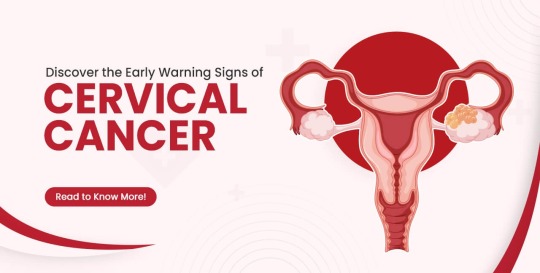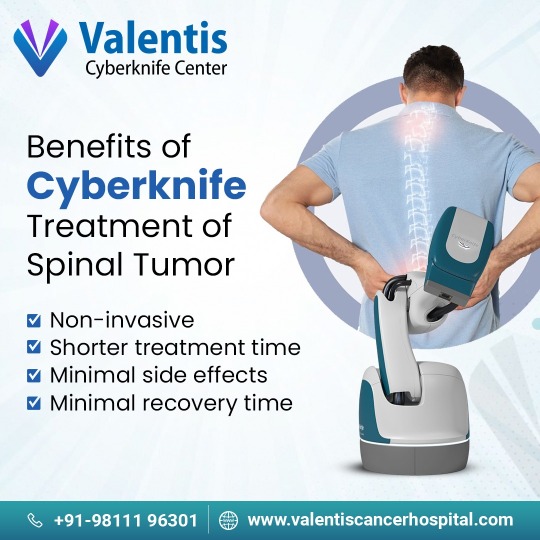#cancertreatment
Text
Evolving Trends in the Acute Myeloid Leukemia Market and a Vision Towards 2032.

Global Acute Myeloid Leukemia Market size will grow at 10.7% CAGR from 2024 to 2032, propelled by regulatory approvals for novel drugs and therapies for the disease treatment. Rapid advancements in treatment options and the ongoing R&D efforts are providing patients with access to more effective and targeted therapies for improving the overall outcomes. With strong focus on personalized medicine and innovative treatments, the acute myeloid leukemia (AML) industry will expand as new therapeutic options emerge while the existing treatments are optimized for enhanced efficacy. For instance, in December 2022, the FDA granted approval for OLU [89], an IDH1 inhibitor, for the treatment of relapsed or refractory (R/R) AML. This approval is based on a phase 1/2 trial involving patients with IDH1-mutant R/R AML who had not previously received IDH1 inhibitors.
The acute myeloid leukemia market is segmented into disease type, treatment type, route of administration, end-user, and region.
Based on disease type, the industry size from the myelomonocytic leukemia segment will achieve 11.6% CAGR up to 2032, driven by its prevalence as it accounts for a significant portion of AML cases. Myelomonocytic leukemia is characterized by the presence of both myeloid and monocytic cells, requiring targeted treatment approaches. With advancements in understanding the molecular mechanisms of this subtype, tailored therapies are being developed, further contributing to the segment growth.
Acute Myeloid Leukemia market size from the targeted therapy treatment type segment will foresee an 11.4% CAGR between 2024 and 2032. This is due to the efficacy and specificity of targeted therapies in treating AML, which often have fewer side effects compared to traditional chemotherapy. Drugs targeting specific mutations like FLT3, IDH1, and IDH2 are gaining prominence. The ongoing advancements in targeted therapy development and personalized medicine approaches for offering promising treatment options for patients will also drive the segment expansion.
Asia Pacific acute myeloid leukemia market will register a 12.3% CAGR from 2024 to 2032. The growth can be attributed to the increasing prevalence of AML, particularly in countries like China and Japan along with the rising aging population. Robust advancements in healthcare infrastructure are expanding the access to treatment options across the region. With the growing focus on personalized medicine and innovative therapies, Asia Pacific will further emerge as a key contributor in the acute myeloid leukemia industry.
#AcuteMyeloidLeukemia#AML#CancerTreatment#Oncology#MedicalResearch#Healthcare#MarketAnalysis#Hematology#PatientCare#MarketTrends
2 notes
·
View notes
Text
కిడ్నీ క్యాన్సర్ ని జయించిన యోధుడు షామిర్ | Kidney Cancer Survivor Story | Punarjan Ayurveda
In this inspiring video, join Nerella Buchaiah as he shares his incredible journey of surviving pancreatic cancer. Discover his remarkable story of resilience, hope, and determination to overcome this formidable disease. Nerella will take you through his battle, from the initial diagnosis to the revolutionary treatment he received at Punarjan Ayurveda Hospital. Through this emotional and empowering tale, you will gain insights into the challenges faced by pancreatic cancer patients and witness the indomitable spirit of a survivor. Don't miss this gripping account that spreads awareness, offers support, and offers a glimmer of hope to those fighting pancreatic cancer.
https://www.youtube.com/@PunarjanAyurveda?sub_confirmation=1
Subscribe to our channel for more compelling survivor stories and valuable information on the advances in pancreatic cancer treatments.
Website: www.punarjanayurveda.com
youtube
#kidneycancer#survivorstories#punarjanayurveda#cancertreatment#cancerawareness#DrBommu#DrBommuVenkateshwaraReddy#PunarjanAyurveda#CancerHospital#CancerHospitalHyderabad#Youtube
2 notes
·
View notes
Text
Please donate if you are able 🧡🎗️🙏🏻
#luekemiaawareness#donate if you can#cancertreatment#medicalbills#everypennycounts#pleasedonate#leukemia#bloodcancer
2 notes
·
View notes
Text
Experience World-Class Cancer Treatment in Coimbatore at Sri Ramakrishna Hospital

2 notes
·
View notes
Photo

Hello everyone! I just wanted to share another update on Katie and my sister (for more details, please clink on the link in my bio.) I also wanted to say thank you to all of you who have been continuing to be supportive and sending your good thoughts their way. I am so grateful and blown away by everyone’s generosity! • I know times are difficult for a lot of people right now, so if I could just ask for your continued positive thoughts, I would really appreciate it. Katie (and my sister) have a difficult road ahead of them and could use all the help we can send their way! And please wish these two amazing humans a happy birthday! Cathy’s was yesterday, Katie’s is today! • Thank you so much! Sending much love out to you all. • • #gofundme #cancersucks #cancertreatment #ssca #seattlecancercarealliance #loveislove #fightingcancertogether #thankyou #cancerdiagnosis #crowdfunding #financialassistance #cosurvivor https://www.instagram.com/p/CmRlsp3r7CB/?igshid=NGJjMDIxMWI=
#gofundme#cancersucks#cancertreatment#ssca#seattlecancercarealliance#loveislove#fightingcancertogether#thankyou#cancerdiagnosis#crowdfunding#financialassistance#cosurvivor
2 notes
·
View notes
Text
Throat Cancer Doctor in Pimpri Chinchwad |Cancer Specilist In Pune | Dr. Ashish Pokharkar
Dr. Ashish Pokharkar is leading Cancer Specialist Doctor in Pune, Pimpri Chinchwad PCMC who offers you best facilities for diagnosis & treatment options for all types of Cancers & delivers best results to overcome Cancer.
2 notes
·
View notes
Text
HBOT-India Launches One of the First Medical Grade Hyperbaric Oxygen Therapy in Gurugram, Delhi NCR, India
In 2020, according to the International Diabetes Federation (IDF), 463 million people have diabetes in the world, 88 million people in the South Asia region, of this 88 million people, 77 million belong to India. Approximately 25% develop Diabetic Foot Ulcers (DFU), of which 50% become infected, requiring hospitalization while 20% need amputation. Adding Hyperbaric oxygen therapy to Standard of care reduces the risk of major amputation by approx. 20–30% and increases wound healing rate by 9–10 times. Further benefits of Hyperbaric Oxygen are not just limited to Diabetic Foot Ulcer treatment but stretch wider into many diseases and conditions.

HBOT (Hyperbaric Oxygen Therapy)
Hyperbaric Oxygen Therapy, or many times known by its acronym HBOT involves breathing oxygen at pressure higher than atmospheric pressure. It is administered in specially designed chambers which helps create ambient pressure 2–3 times higher than that found at sea level to help dissolve oxygen into blood. According to Henry’s law, with rise in pressure the amount of gas dissolved in liquid increases. Henceforth inhaling oxygen in pressurized chamber increases the amount of oxygen dissolved in blood plasma apart from the oxygen bound to Hemoglobin. This substantial increase in plasma oxygen concentration increases oxygen delivery to tissues by 10 to 15 times as compared to the amount received through normal breathing and as a result, this increased oxygen into the system provides many benefits.
Dr. Mandeep Singh Malhotra, Surgical Oncologist (Clinical Lead & Mentor — Art of Healing Cancer- AOHC) suggests as per research that in a single hour of HBOT treatment, the body takes in approximately about 2.4 pounds of oxygen into the tissue and this increased oxygen benefits by
Increase oxygen delivery to tissues with compromised blood flow such as diabetic foot ulcers, stroke, trauma, flaps, necrotic tissue in cancer, etc.
Decreases swelling and inflammation by deactivation of toxins; Increases the ability of body’s immune cells to fight off infections.
Stimulates new blood vessels and capillary growth that aid in wound healing and also removal of toxins and waste products.
Increases the active firing of nerve cells thus help in neural recovery.
Thus, Hyperbaric Oxygen Therapy has documented benefits in many diseases like:
Diabetic Foot Ulcers
Wound Healing
Severe Anaemia
Delayed Radiation Injury or Radiation Necrosis
Traumatic Brain Injury
Gangrene
Compromised Grafts & Flaps
Vision loss or sudden hearing loss
Brain Abscess
There are certain other conditions in which HBOT is likely to benefit:
Brain Stroke
Brain Related Disorders like Alzheimer, Paralysis, Parkinson’s, Brain Fog, etc
Refractory Cancers which do not respond to chemotherapy
“We are pleased to share that, through the initiative of HBOT India (www.hbot-india.com), the first 3 ATA Medical Grade Hyperbaric Oxygen Machine is installed in Gurgaon, Delhi-NCR, in collaboration with HCAH (Health Care at Home, www.hcah.in), Guru Harikrishn Foundation (A Non-Profit Charitable Institution, www.harikrishn.org) & Art of Healing Cancer (an Advanced Stage Cancer Institution, www.artofhealingcancer.com),” says Arpan Talwar, Co-Founder HBOT India.
“As Hyperbaric oxygen therapy is supportive in various medical conditions and is the first of its kind in the city, we believe that this infrastructure can help patients not just reaching out directly to HBOT India but also to patients of various hospitals in the vicinity in the city. We plan to become a Nodal Centre of hyperbaric in Delhi-NCR,” says Mr. Manjit Singh, Founding Director at Guru Harikrishn Foundation.
About HBOT India
For more information, please visit: www.HBOT-India.com
Press Release:https://www.businesswireindia.com/hbot-india-launches-one-of-the-first-medical-grade-hyperbaric-oxygen-therapy-in-gurugram-delhi-ncr-india-80264.html?fbclid=IwAR3gu2KleHx06zW5si-lKjyML8fIFz6kuv0xGyFXNU5Y13fnyr7IemRPWHM
For further assistance, reach out to us at:
Email- [email protected]
Website - www.hbot-india.com
#hbotindia#hyperbaricoxygen#hyperbarictherapy#hyperbaricmedicine#hyperbaric#hyperbaricoxygentherapy#hyperbaricoxygenchamber#Gurgaon#delhincr#cancertreatment#diabetes#woundhealing#paralysistreatment#brainstrokes#necrosis#diabetesawareness#hbot
3 notes
·
View notes
Photo

New chemo starts today - my tumors kept growing while I was on the last drug, so Dr. Vlad has me on two different medications now. And I’m so glad my mom is here with me! I know it’s important to her to be here when I’m sick and tired, and it’s a true blessing to have such an awesome mom. Let’s hope these drugs kill all of my tumors so I can get back on the road! #fuckcancer #starbrightsadventure #sharpmemorial #bucketlistadventures #cancerlife #chemo #chemotherapy #nohairdontcare #fightlikeagirl #cancertreatment #cancer #metastaticbreastcancer #stageIV (at Sharp Memorial Hospital) https://www.instagram.com/p/CjJLxI6OjO9/?igshid=NGJjMDIxMWI=
#fuckcancer#starbrightsadventure#sharpmemorial#bucketlistadventures#cancerlife#chemo#chemotherapy#nohairdontcare#fightlikeagirl#cancertreatment#cancer#metastaticbreastcancer#stageiv
2 notes
·
View notes
Text
100% Disabled Navy Veterans Friend and Support Dog "Namaste" has Large Cell Lymphoma. Help us Help Namaste receive Cancer Treatment.











#doberman#doberman pinscher#Dobermans#caninelymphoma#fuckcancer#doglovers#reddoberman#cancertreatment#petfundraiser
2 notes
·
View notes
Text
Tag your friend who is playing with his health under someone's influence
7 notes
·
View notes
Text
Why "Prevention is better than Cure" prove most suitable in the case of Cancer?

Since our childhood, we have always heard that " Prevention is better than Cure". What is exactly the message in this? What is your understanding? Before digging down into the details let’s move forward to understand these two words first – Prevention & Cure.
Prevention: Prevention is all about your status of being healthy, happy, and independent as long as possible; that means reducing the chances of any problems or challenges before the same may be expected. There is no age restriction applicable in the case of Prevention. It hardly matters what physical age you are in? This is truly vital for an old person and at the same time for a young person. What we need is to educate people by sharing proper information, build their skills and boost their confidence so that they have control of their life and health.
Cure: Cure is about all the external procedures which are required to minimize the damage done by factors which you are not able to prevent in the first place. A cure is a substance or procedure that ends a medical condition, such as a medication, a surgical operation, a change in lifestyle, or even a philosophical mindset that helps end a person's sufferings; or the state of being healed or cured. The medical condition could be a disease, mental illness, genetic disorder, or simply a condition a person considers socially undesirable, such as baldness or lack of breast tissue. (Credit: Wikipedia).
Now, we are in the position to safely jump on the Subject Why "Prevention is better than cure" proves most suitable in the case of Cancer? Prevention is always better than cure as prevention stop the damage while cure tries to recover the damage which is never 100%.
Every cure has leftovers in one or another way. Especially if we talk about Cancer. Cancer is still a deadly word among societies. Cancer is a disorder of tissues in which irregular cells divide violently and destroy surrounding body tissue. The destruction always is damage! No matter how worth your cure is, the damage is confirmed.

To understand what positive effect the prevention will impact on our health, let me guide you through the details of Cancer. Cancer a name was given to the set of related diseases. In every Cancer, some of the body cells or tissues start to divide uncontrollably and start spreading into the surrounding cells or tissues.
Cancer can make its appearance in any part of the body. A solid tumor (mass of tissues) can be easily noticed; however, the other form of Cancer like Blood Cancer is hard to detect, as there will not be a visible external sign.
Normally whenever our body demands, human cells start growing and divide to form new cells. Same way when they become old or damaged they die and new cells take their place.
Cancerous cells are malignant, which means they can spread into nearby tissues. Also, they can travel to the other parts of the body through the blood or the lymph system and may form new Cancer tumors at the new place.
Difference between Normal Cells and Cancer Cells
There is much distinguishable difference between Normal and Cancer Cells. Normal Cells grow mature and stop with a specific function whereas Cancer cells are not specialized and continue to grow (divide) without stopping.
Cancer cells are influencers of Normal Cells and can induce nearby normal cells to form a tumor. Cancer cells can also attack the immune system however; the immune system of a body normally removes damaged or abnormal cells.
How Cancer Starts
Cancer can be caused genetically which means you may inherit them from your parents. They can also arise during a person’s lifetime caused by certain environmental factors like smoking or chewing tobacco, ultraviolet radiation, etc.
Drivers of Cancer
The genetic changes that contribute to Cancer mainly tend to affect three main types of genes proto-oncogenes, tumor suppressor genes, and DNA repair genes, which are known as Drivers of Cancer.
Proto-oncogenes are normal cell growth and division. However, they may become Cancer-causing genes (or oncogenes), when these genes are altered in certain ways or are more active than normal; it allows cells to grow and survive when they are not supposed to.
The Tumour suppressor genes also control cell growth and division. The cells with fixed variations in tumor suppressor genes can divide in an uncontrolled manner.
DNA repair genes are involved in the maintenance of damaged DNA. Cells with mutations in DNA repair genes tend to evolve secondary mutations in other genes. Together, these transformations may cause the cells to become cancerous cells.
Metastatic Cancer
Cancers that spread from one place to other places are known as Metastatic Cancer and the process is known as Metastatic. They have the same name and type as the original Cancer. Treatment may help to increase the lives of few people with metastatic Cancer. In general, most people who die of Cancer die of metastatic disease.
All tissue changes are not Cancer; however if not diagnosed and treated, may develop into Cancer. Below are some examples of tissue changes.
Hyperplasia
When cells within a tissue divide rapidly than the normal rate and additional cells build up. However, these cells or the tissue look regular under a microscope. Hyperplasia may have occurred because of several factors such as chronic irritation.
Dysplasia
It is a more severe condition than hyperplasia. In dysplasia, the extra cells look more irregular and there are changes in the way how the tissue is arranged. As a rule, the more irregular the cells and tissue look, the greater likelihood is that Cancer will form. An example of dysplasia is an abnormal mole on the skin.
Types of Cancer
To date, there are 100+ types of known Cancer. Cancer is usually categorized and named for the organs or tissues affected. For example, lung Cancer affects cells of the lung, breast Cancer affects the cells of the breast, and brain Cancer affects the cells of the brain.
Below is the list of such few Cancer categories that affect a specific type of cell or tissue,
Carcinoma: This is the most common type of Cancer and starts in the epithelial cells of the skin or in the cells that line the internal organs such as the liver and kidneys. There are many types of epithelial cells, which have a column-like shape when observed under a microscope.
Different epithelial cell types have specific names based on Carcinomas origin,
Adeno Carcinoma: It is a Cancer that produces fluids or mucus. Tissues having such epithelial cells are also known as glandular tissues. Cancers of the prostate, breast, and colon most are adenocarcinomas.
Basal Cell Carcinoma: It is a Cancer that originates in the lower or basal layer of the epidermis, which is the outer layer of skin.
Squamous Cell Carcinoma: It is a Cancer that lies just beneath the outer surface of the skin. Squamous cells also attack many other organs, including the stomach, intestines, lungs, bladder, and kidneys. Squamous cells look flat when observed under a microscope. They are called epidermoid carcinomas.
Transitional Cell Carcinoma: It is a type of epithelial tissue (transitional epithelium, or urothelium). This tissue is made up of several layers of epithelial cells and is found in the part of the kidneys (renal pelvis), ureters, linings of the bladder, and a few other organs. Cancers of the bladder, ureters, and kidneys are known as transitional cell carcinomas.
Sarcoma: Cancers that form in bone and soft tissues are Sarcomas, This is also found in muscle, fat, blood vessels, lymph vessels, and fibrous tissue (such as tendons and ligaments).
Osteosarcoma: This is the most known Cancer of the bone. The popular types of soft tissue sarcoma are dermatofibrosarcoma protuberans, Kaposi sarcoma, leiomyosarcoma, liposarcoma, and, malignant fibrous histiocytoma.
Leukemia: Cancers that originate in the blood-forming cells of the bone marrow are known as leukemia. These Cancers do not form any solid tumors. But large numbers of abnormal WBC grow up in the blood and bone marrow. This abnormal growth of WBC causes a low level of normal blood cells and makes it difficult for the body to get oxygen to its tissues, control bleeding, or fight infections.
Lymphoma: This starts in lymphocytes (T cells or B cells). These are disease-fighting WBC that are part of the immune system. In this, irregular growth of lymphocytes seen in lymph nodes & lymph vessels, and also in other parts of the body.
There are two main types of Lymphoma,
Hodgkin Lymphoma – People suffering from this disease have irregular lymphocytes that are called Reed-Sternberg cells. These cells usually form from B cells.
Non-Hodgkin Lymphoma – This is a large set of Cancers that start in lymphocytes. Such Cancers can expand very quickly or slowly and may be formed from B cells or T cells.
Multiple Myeloma: Multiple myeloma originates in plasma cells. This is another type of immune cell. The myeloma cells build up in the bone marrow and form tumors in bones all through the body. Other nomenclature of Multiple myeloma is plasma cell myeloma and sometimes Kahler disease.
Melanoma: Melanoma, (melanocytes), which are specialized cells that make melanin (the pigment responsible for skin color). Mainly melanomas grow on the skin, but they can also grow in other pigmented cells, such as the eye.
Most common people do not understand the above explanation related to Cancer. So I am quoting the list of most common Cancer categories that affect a specific organ in the Human body.
Breast Cancer: Cancer that grows and affects the cells of the breasts. Though it is a common type of Cancer in women, also may be rarely found in men. It is also very common to get inherited breast Cancer as the gene mutations are passed through generations of family. You can easily diagnose the abnormality or symptoms of breast cancer on your own.
Wonder, how to examine at home? Start with a firm, soft, and, smooth touch with the first few fingers of your hand, hold your fingers flat and together. Rotate your hands in a circular motion, about the size of a quarter. Now cover the entire breast with your palm side by side and then from top to bottom. Did you notice any changes? Examine again from your collarbone to the top of your abdomen, and then repeat the same from your armpit to your cleavage to identify any unusual growths or symptoms.

Blood Cancer: This is also known as Leukaemia which is a group of Blood Cancers that normally grows in the bone marrow and result in the huge growth of abnormal WBC. Various types of Leukaemia exist such as acute lymphoblastic leukemia, acute myeloid leukemia, and chronic lymphocytic leukemia. Leukemia can affect Children and Adults both.
Cervical Cancer: A malignant tumor of the cervix, the lowermost part of the uterus that connects to the vagina. The most common cause of this type of Cancer is various strains of the Human Papilloma Virus (HPV), a sexually transmitted infection. Typically, the body’s immune system fights and prevents the harm caused by the HPV, still, this virus survives for many years and may cause normal cells to Cancer cells.
It is very difficult to diagnose Cervical Cancer at its early-stage as there is generally no signs or symptoms; however diagnosis may be possible at the more advanced level of Cervical Cancer.
Oral Cancer: Any type of Cancer that develops in any part of the mouth including the lips, tongue, gums, cheeks, top and bottom floor of the mouth, hard and soft palate, sinuses, and pharynx (throat). These are very common and also life-threatening if not diagnosed and treated properly. In the early stage, this normally causes any pain. However, in the advanced stage, the Cancer sore may appear white, grey, or yellow, and the edges are red. Most oral Cancers are of type squamous cell carcinoma and tend to spread very quickly. Although Oral Cancer can develop at any age however people older than 45 have an increased risk for oral Cancer
Other common types of Cancer are:
Prostate Cancer: An abnormal growth in a man's prostate.
ü Skin Cancer (Melanoma): The most dangerous type of skin Cancer.
ü Colon Cancer: This Cancer grows in the colon or rectum.
ü Lung Cancer: This type of Cancer affects the lungs and is most common in people who smoke.
Now you surely can be educated and informed enough that you can analyze the threats if caused by Cancer.
We, Cancer Samiksha, feel what you feel” and, strongly believe that “Prevention is better than Cure”. A second opinion could be a lifesaving step if available at the right time. The second opinion is the way of getting Cancer treatment advice from more than one place. All you might be aware of that getting a second opinion on Cancer is normally a time-consuming activity, as it requires you to travel and stay in other cities to get the best advice on Cancer treatment. This also is not a pocket-friendly step.
So, We, Cancer Samiksha, offer you an online Second opinion option with your fingertips. This drastically reduces your overall time to 48 hours and also saves your pocket as you need not visit and stay.
Cancer Samiksha has a team of 40+ experts (Oncologists) of their domain who are always ready and happy to offer consultation through individual or panel advice. You may get a second opinion at any stage of your Cancer treatment. Getting expert advice at Cancer Samiksha is a user-friendly series of a few mandatory steps where you need to upload your reports along with the necessary details.
We, at Cancer Samiksha, value your time and share online Cancer consultations within 48 hours of uploading your reports. You may also speak with your consulting Doctor through video calling.
So, during your Cancer treatment journey, whenever you think that “Are you getting the Best Cancer Treatment”? Feel free to Connect with Cancer Samiksha as “We feel what you feel”. You will get the best Second opinion on Cancer treatment!
If you resonate with the information provided here, connect me on -
Participate in a Cancer risk analysis self-assessment mission free:
Join Our Telegram Channel for regular updates on cancer - https://t.me/+kYNaOIqQKzJjYzA1
Join What’s App Group for regular updates on cancer - http://bit.ly/2EFQRtZ
Click to join our FB Page - https://www.facebook.com/CancerSamiksha
We are available on what’s app - 98814 00 500
It was great sharing my thoughts “Be safe, please don’t step out unless it is extremely important, and wash your hand regularly. Take special care of senior citizens."
.
Best Wishes
Ajay Balai
CEO – Cancer Samiksha (Powered By – Universal Cancer Conquest UCC)
P.S. If you share this blog, it will make my day awesome!
2 notes
·
View notes
Text

Best Cervical Cancer Treatment Hospital in Delhi | Action Cancer Hospital
Discover top-notch cervical cancer care at Action Cancer Hospital in Delhi. Our expert team offers cutting-edge treatments and compassionate support, ensuring the best possible outcomes for patients. Trust in our renowned expertise and state-of-the-art facilities for comprehensive care. Your journey to recovery starts here.
0 notes
Text
Unveiling Cancer Symptoms and Their Solutions: A Comprehensive Guide

Introduction:
In the realm of health concerns, few words carry the weight and gravity of "cancer." It's a diagnosis that strikes fear into the hearts of many, yet understanding its symptoms and available solutions can empower individuals to take proactive steps towards detection and treatment. In this guide, we'll delve into the intricate landscape of cancer symptoms and its solution, shedding light on the signs to watch out for and the array of treatment options available.
Understanding Cancer Symptoms:
Cancer symptoms can manifest in a multitude of ways, often varying depending on the type and stage of the disease. Recognizing these symptoms is crucial for early detection and intervention. While the signs may differ across different types of cancer, some common indicators serve as red flags for further investigation. It's essential to remain vigilant and attentive to any changes in your body that could signal potential trouble. Identifying cancer symptoms and its solution early can significantly improve treatment outcomes and prognosis.
Common Cancer Symptoms:
Persistent Fatigue: Feeling constantly tired or exhausted, despite adequate rest, could be a sign of underlying health issues, including cancer. Fatigue is a common symptom across various types of cancer and should not be overlooked. Seeking medical advice and exploring cancer symptoms and its solution options is imperative if fatigue persists.
Unexplained Weight Loss: Significant and unexplained weight loss can sometimes be a symptom of cancer, particularly in cases where the body is expending energy fighting the disease. While weight loss can occur for various reasons, it's essential to consult with a healthcare professional to rule out any serious underlying causes.
Changes in Bowel or Bladder Habits: Alterations in bowel movements or urinary habits, such as persistent constipation, diarrhoea, blood in stool or urine, or frequent urination, can be indicative of certain types of cancer, including colorectal or bladder cancer. Any persistent changes in these bodily functions warrant prompt medical evaluation and consideration of cancer symptoms and its solution.
Unexplained Pain: Chronic or persistent pain without an apparent cause should never be ignored. While pain can stem from numerous sources, it can also be a symptom of cancer, particularly when it persists over time and does not respond to typical treatments. Consulting with a healthcare provider to explore potential causes and solutions is crucial in such cases.
Changes in Skin Appearance: Skin changes, such as the development of new moles or changes in existing ones, can sometimes indicate skin cancer. Additionally, non-healing sores or ulcers, changes in the size or shape of existing lesions, or unusual pigmentation should prompt further investigation by a dermatologist or healthcare professional well-versed in cancer symptoms and its solution.
Persistent Cough or Hoarseness: A persistent cough or hoarseness that lingers for an extended period, especially in non-smokers or individuals without a history of respiratory issues, may be a symptom of lung cancer or other respiratory malignancies. Seeking medical evaluation and considering cancer symptoms and its solution options is vital in such cases.
Difficulty Swallowing: Dysphagia, or difficulty swallowing, can sometimes indicate underlying issues, including oesophageal cancer or other gastrointestinal malignancies. Any persistent difficulty or discomfort when swallowing warrants medical assessment to explore potential causes and solutions.
The Importance of Early Detection:
Early detection plays a pivotal role in improving cancer outcomes and prognosis. By identifying cancer symptoms and its solution at an early stage, individuals can access a wider range of treatment options and significantly increase their chances of successful recovery. Regular health screenings, self-examinations, and staying attuned to changes in your body are essential components of early detection efforts. Additionally, promptly consulting with healthcare professionals upon noticing any concerning symptoms can facilitate timely diagnosis and intervention, potentially saving lives in the process.
Cancer Screening and Diagnostic Procedures:
Screening and diagnostic procedures are instrumental in detecting cancer at its earliest stages when treatment outcomes are most favorable. These procedures encompass a range of tests and examinations designed to identify abnormalities or early signs of cancer before symptoms manifest. Common cancer screening methods include mammography for breast cancer, Pap smear for cervical cancer, colonoscopy for colorectal cancer, and prostate-specific antigen (PSA) testing for prostate cancer, among others. Diagnostic procedures such as imaging studies (e.g., X-rays, CT scans, MRI scans) and biopsy may be employed to confirm a cancer diagnosis and determine its stage and extent.
Treatment Options for Cancer:
Cancer treatment encompasses a diverse array of modalities tailored to the specific type, stage, and individual characteristics of the disease. The primary treatment modalities for cancer include surgery, chemotherapy, radiation therapy, immunotherapy, targeted therapy, and hormone therapy, among others. Treatment plans are often multifaceted, combining different approaches to achieve optimal outcomes. The selection of treatment modalities depends on various factors, including the cancer type and stage, the individual's overall health status, and their preferences and goals. Collaborative decision-making between patients and healthcare providers is essential in determining the most suitable treatment approach.
Surgical Intervention:
Surgery plays a central role in the treatment of many solid tumours, offering the potential for curative resection or palliation of symptoms. Surgical procedures may involve the removal of the primary tumour, nearby lymph nodes, and adjacent tissues to achieve complete excision and prevent disease recurrence. Minimally invasive techniques, such as laparoscopy and robotic-assisted surgery, have revolutionized surgical oncology, offering patients shorter recovery times, reduced postoperative pain, and improved cosmetic outcomes.
Chemotherapy:
Chemotherapy involves the use of cytotoxic drugs to kill cancer cells or inhibit their growth and proliferation. It is a systemic treatment modality that targets cancer cells throughout the body, making it particularly useful for cancers that have spread beyond their primary site (metastatic disease). Chemotherapy may be administered alone or in combination with other treatment modalities, such as surgery or radiation therapy, depending on the specific cancer type and stage. While chemotherapy can be effective in destroying cancer cells, it may also cause side effects due to its impact on healthy tissues and organs.
Radiation Therapy:
Radiation therapy utilizes high-energy radiation beams to destroy cancer cells and shrink tumours. It can be delivered externally (external beam radiation) or internally (brachytherapy), depending on the cancer type and location. Radiation therapy may be used as a primary treatment modality for certain cancers or in combination with surgery, chemotherapy, or other systemic therapies. Advances in radiation oncology, such as intensity-modulated radiation therapy (IMRT) and stereotactic body radiation therapy (SBRT), have improved treatment precision and efficacy while minimizing side effects.
Immunotherapy:
Immunotherapy harnesses the body's immune system to recognize and attack cancer cells, offering a novel approach to cancer treatment. By stimulating or enhancing the immune response against cancer, immunotherapy drugs can help control tumour growth and improve survival outcomes in certain cancer types, including melanoma, lung cancer, and kidney cancer. Immune checkpoint inhibitors, chimeric antigen receptor (CAR) T-cell therapy, and cancer vaccines are among the immunotherapeutic strategies currently being investigated and utilized in clinical practice.
Targeted Therapy:
Targeted therapy involves the use of drugs or other substances that specifically target cancer cells' unique molecular characteristics or pathways essential for tumour growth and survival. Unlike traditional chemotherapy, which indiscriminately kills rapidly dividing cells, targeted therapy aims to selectively inhibit cancer cell proliferation while sparing normal cells. Molecular profiling of tumours and genetic testing help identify actionable targets for targeted therapy, allowing for personalized treatment approaches tailored to the individual's cancer subtype and molecular profile.
Hormone Therapy:
Hormone therapy, also known as endocrine therapy, is commonly used in the treatment of hormone-sensitive cancers, such as breast and prostate cancer. It works by blocking or inhibiting the production of hormones (e.g., estrogen, testosterone) that fuel cancer growth and progression. Hormone therapy may involve the use of medications that suppress hormone production or block hormone receptors on cancer cells, thereby depriving them of the signals needed for proliferation. Hormone therapy can be an effective treatment option for hormone receptor-positive cancers, either as a primary treatment modality or in combination with other therapies.
Complementary and Integrative Approaches:
In addition to conventional cancer treatments, many individuals explore complementary and integrative approaches to manage symptoms, enhance well-being, and improve quality of life during and after cancer treatment. These approaches encompass a wide range of practices, including acupuncture, massage therapy, yoga, meditation, dietary supplements, and mind-body techniques. While not intended to replace standard medical care, complementary and integrative therapies can complement traditional treatments and provide valuable supportive care to cancer patients. It's essential to consult with healthcare professionals and integrative medicine specialists to ensure the safe and appropriate use of these modalities in conjunction with conventional cancer care.
Conclusion:
Navigating the complex terrain of cancer symptoms and its solution can be daunting, but armed with knowledge and awareness, individuals can take proactive steps towards prevention, early detection, and effective treatment. By recognising common cancer symptoms, pursuing regular screenings, and exploring the diverse array of treatment options available, individuals can empower themselves to confront cancer with resilience and hope. Remember, early detection saves lives, and every step towards cancer awareness and prevention brings us closer to a future free from the burden of this devastating disease.
#CancerSymptoms#CancerAwareness#CancerPrevention#CancerTreatment#HealthGuide#MedicalInformation#CancerSupport#HealthAwareness#HealthEducation
0 notes
Text

Benefits of Cyberknife
Treatment of Spinal Tumor
✔ Non-invasive
✔ Shorter treatment time
✔ Minimal side effects
✔ Minimal recovery time
To Book Your Appointment
Call - +91-9811196301
For more Information Visit - https://www.valentiscancerhospital.com/
#ValentisCancerHospital#CyberKnifeTreatment#SpinalTumor#NonInvasive#ShortTreatment#MinimalSideEffects#QuickRecovery#CancerTreatment#PrecisionMedicine
0 notes
Text
Dr. Tushar Jadhav - Surgical Oncologist in Navi Mumbai
Receive personalized attention and advanced surgical care for cancer from Dr. Tushar Jadhav in Navi Mumbai. As a respected Surgical Oncologist, he is committed to guiding you through your cancer journey with professionalism and compassion. Contact us to schedule a consultation.
For more information : https://maps.app.goo.gl/nADSMnk5acNxGDX46
#DrTusharJadhav#SurgicalOncologist#NaviMumbai#CancerSpecialist#OncologyExpert#MedicalProfessional#HealthcareProvider#SurgeryExpert#CancerTreatment#NaviMumbaiDoctor
0 notes
Text
Advanced Radiation Therapy For Cancer Treatment
At, Pragma Super Specialty hospital , Advance Radiation Therapy For Cancer Patient are Available
Radiation therapy delivered using a LINAC is also known as external beam radiation therapy LINAC excels at precisely shaping the radiation beam to the tumor, minimizing damage to surrounding healthy tissues. This makes it a safer alternative to traditional radiation therapy methods. Patient safety is prioritized during LINAC treatment. That's why this recommend for cancer patient.

#Advanceradiationthreapy#Cancertreatment#Linearaccelerator#LINAC#Radiationtherapy#cancercare#newtechniques#newtechnologies#pragmamedicalinstitute#pragmacares
0 notes